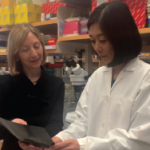Josef Smolen, MD, who is chair of the Division of Rheumatology at the Medical University of Vienna in Austria and chair of the second department of medicine at the Center for Rheumatic Diseases at Hietzing Hospital in Vienna, points out that despite the progress with biologic agents, “erosions by themselves will not affect physical function nearly as much as cartilage damage, which is really the driver of physical function. There is a lot to do in the respect of not only interfering with damage, but in getting repair going. At the end of the day, what we need to look at is the whole gestalt of the joint. Stopping erosions will not be enough if cartilage damage continues to progress.”
As new discoveries unfold, maintaining the communication lines between the bench and the bedside will be key, says Dr. Nakamura.
As to the value of following basic research, Dr. Charles believes that understanding basic biology of the bone and the immune system linkage is “extraordinarily important for us as a community. The basic science mouse-model level, the human translational science level and the clinical trial level: all are important parts of the scientific enterprise. Understanding basic pathophysiology and mechanisms helps us understand new clinical findings, while unexpected clinical findings can and should send us back to the bench to explore new areas of research.”
Gretchen Henkel is a medical journalist based in California.
References
- Gravallese EM, Harada Y, Wang JT, et al. Identification of cell types responsible for bone resorption in rheumatoid arthritis and juvenile rheumatoid arthritis. Am J Pathol. 1998 Apr;152(4):943–951.
- Pettit AR, Ji H, von Stechow D, et al. TRANCE/RANKL knockout mice are protected from bone erosion in a serum transfer model of arthritis. Am J Pathol. 2001 Nov;159(5):1689–1699.
- Kong YY, Yoshida H, Sarosi I, et al. OPGL is a key regulator of osteoclastogenesis, lymphocyte development and lymph-node organogenesis. Nature. 1999 Jan 28;397(6717):315–323.
- Redlich K, Hayer S, Ricci R, et al. Osteoclasts are essential for TNA-alpha-mediated joint destruction. J Clin Invest. 2002 Nov;110(10):1419–1427.
- Bromley M, Woolley DE. Chondroclasts and osteoclasts at subchondral sites of erosion in the rheumatoid joint. Arthritis Rheum. 1984 Sep;27(9):968–975.
- Takayanagi H, Oda H, Yamamoto S, et al. A new mechanism of bone destruction in rheumatoid arthritis: Synovial fibroblasts induce osteoclastogenesis. Biochem Biophys Res Commun. 1997;240(2):279–286.
- Schett G, Gravallese E. Bone erosion in rheumatoid arthritis: Mechanisms, diagnosis and treatment. Nat Rev Rheumatol. 2012 Nov;8(11):656–664.
- Charles JF, Aliprantis AO. Osteoclasts: More than ‘bone eaters.’ Trends Mol Med. 2014 Aug;20(8):449–459.
- Redlich K, Görtz B, Hayer S, et al. Repair of bone erosions and reversal of systemic bone loss upon therapy with anti-tumor necrosis factor in combination with osteoprotegerin or parathyroid hormone in tumor necrosis factor-mediated arthritis. Am J Pathol. 2004 Feb;164(2):543–555.
- Ritte SY, Subbaiah R, Bebek G, et al. Proteomic analysis of synovial fluid from the osteoarthritic knee: Comparison with transcriptome analyses of joint tissues. Arthritis Rheum. 2013 Apr;65(4):981–992.
